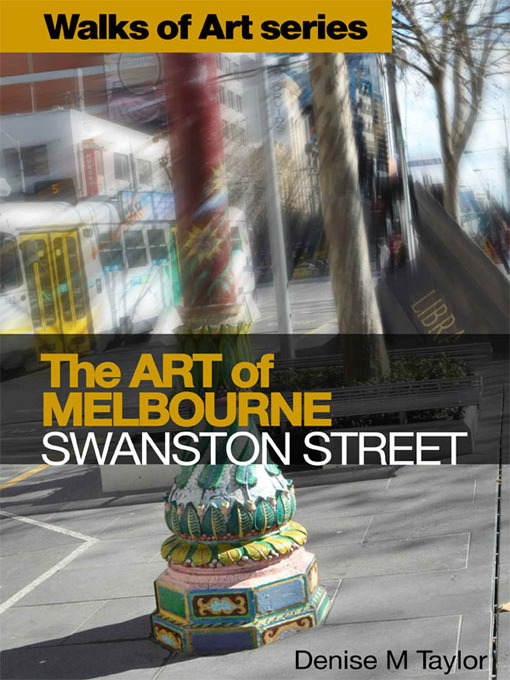Stroll or tram down Swanston Street, aptly referred to as 'Melbourne's iconic spine', and you will encounter contemporary architecture and street art vying for attention beside 19th century old-school bronze statues and buildings, permanent reminders of Melbourne's early British settlement. There are no visible signs of the people who first inhabited this land, however, you can engage with Aboriginal art in the Australian collection at the National Gallery of Victoria's Ian Potter Centre, at the rear of Federation Square. There is a free guided tour of Indigenous art (conducted by NGV Voluntary Guides) every day, usually at 1 pm.
This self-guided tour begins at the northern end of Swanston Street: The University of Melbourne's Ian Potter Museum of Art. Before you start, you can enjoy a tea or coffee at the Potter cafe which hugs the north-east corner of the art gallery. Heading south, you will eventually reach the Yarra River where Swanston Street becomes St Kilda Road across Princes Bridge. The green expanse of the Royal Melbourne Botanic Gardens fans out to the left. To the right is the Arts Centre with its spire, and further on, the imposing bluestone building of the National Gallery of Victoria (NGV International) houses a range of international art dating from antiquity through to the 21st century. The tour finishes here.
You will engage with many forms of art which 'speak' to each of us differently—a work of art may remind us of the past (a weathered facade or a history painting), represent the present, or project an imagined future.
After you finish this tour along Swanston Street, you might ask yourself: Is Melbourne developing a distinctive artistic character representative of its past, present and perhaps even its future?
Walks of Art self-guided walking tours spotlight urban pockets of Melbourne and Europe with a focus on art in galleries, on the streets and in public places. As the tours are self-paced, you can determine for yourself how long you spend at each stop. Sometimes looking at a facade is all that is required, or a lengthier time may be spent at a gallery or church. It's all up to you!
Most of the galleries and museums of art on the tours are chosen because they either do not charge admission fees (except for temporary exhibitions), or if they do, the fee is deemed reasonable by the author. Again, you have the choice.
Each walk includes:
The author is mindful of those art-lovers who are confined to a wheelchair. Walks of Art tours consider the ease of wheelchair access along the route.
Traditional travel guide books are expensive, adding bulk and weight to travel bags. They can also be out-of-date very quickly. Walks of Art are distributed as e-guides to smartphones, iPads and Kindles—easy to buy and access, and eco-friendly! The author keeps a vigilant eye on any changes to opening hours, new installations, closures and/or removals of works of art. This means that information can be updated with the click of a button. However, for those travellers who prefer reading print on paper rather than on shiny screens, a pocket-book version of Walks of Art will be available in the near future.
Look out for the next tour in the Walks of Art series which will focus on a pocket in Rome. All tours are intended for those individuals who, like the author, want to experience art ... slowly.

